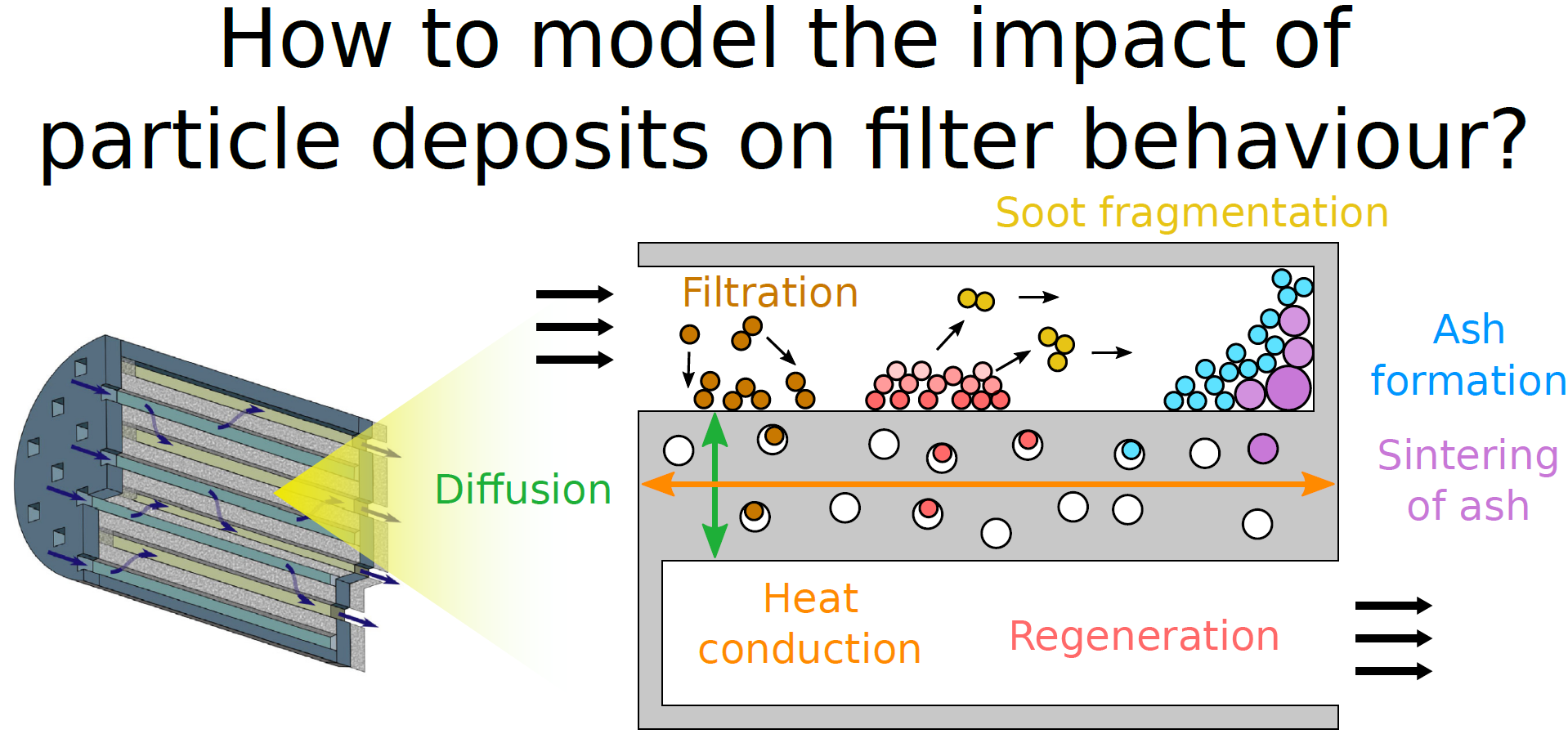Technical Report 291, c4e-Preprint Series, Cambridge
Reviewing the modelling treatment of deposits in particulate filters for internal combustion emissions
Reference: Technical Report 291, c4e-Preprint Series, Cambridge, 2022
- The treatment of particle deposits in filtration models of particulate filters is reviewed.
- The impact of particle deposit on momentum, heat and mass transfer within the particulate filter is discussed.
- Different regeneration models of particulate filters are compared.
- Current modelling approaches of ash deposits are critically discussed.
 Internal combustion in transport vehicles is still one of the biggest contributors to ultrafine particle emissions which have been proven to have many adverse effects on human health and the environment in general. To mitigate this problem a variety of particle filters have been developed and along with these filters a whole range of models aiming to optimise filter performance. This paper reviews a wide variety of particulate filter models for vehicular emission control and presents the volume of work in a unified and consistent notation. Particle filtration models are examined with respect to their filtration efficiency, the way they handle particle deposits within the filter wall, the formation of filter cake and the role of catalytic conversion and the effect of gaseous emission. Further, the impact of the chemical and physical properties of particulate deposits on the filter regeneration process is analysed and reaction pathways and rates are presented. In addition the accumulation of ash deposits and its impact on the filter behaviour is critically reviewed. Finally, various measures are identified that can potentially improve the current particle filter models.
Internal combustion in transport vehicles is still one of the biggest contributors to ultrafine particle emissions which have been proven to have many adverse effects on human health and the environment in general. To mitigate this problem a variety of particle filters have been developed and along with these filters a whole range of models aiming to optimise filter performance. This paper reviews a wide variety of particulate filter models for vehicular emission control and presents the volume of work in a unified and consistent notation. Particle filtration models are examined with respect to their filtration efficiency, the way they handle particle deposits within the filter wall, the formation of filter cake and the role of catalytic conversion and the effect of gaseous emission. Further, the impact of the chemical and physical properties of particulate deposits on the filter regeneration process is analysed and reaction pathways and rates are presented. In addition the accumulation of ash deposits and its impact on the filter behaviour is critically reviewed. Finally, various measures are identified that can potentially improve the current particle filter models.
Material from this preprint has been published in Progress in Energy and Combustion Science.
PDF (5.4 MB)



